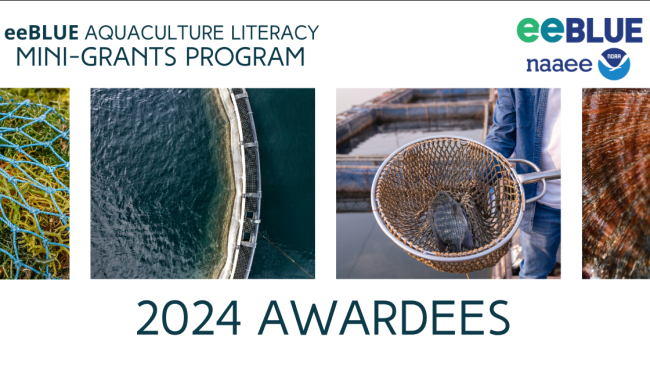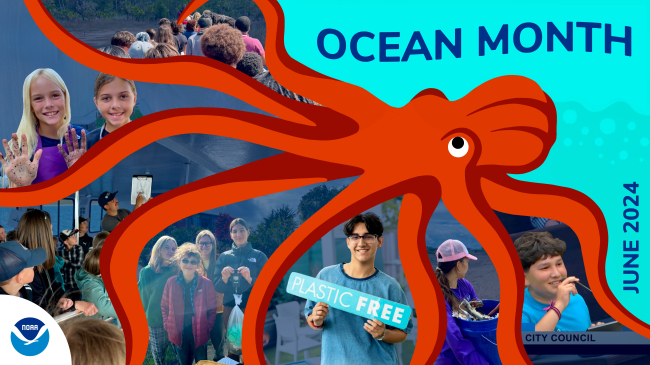In support of National Environmental Education Week offsite link, we’re highlighting environmental education projects funded by NOAA’s Bay Watershed Education and Training (B-WET) program and the Ocean Guardian School Program.
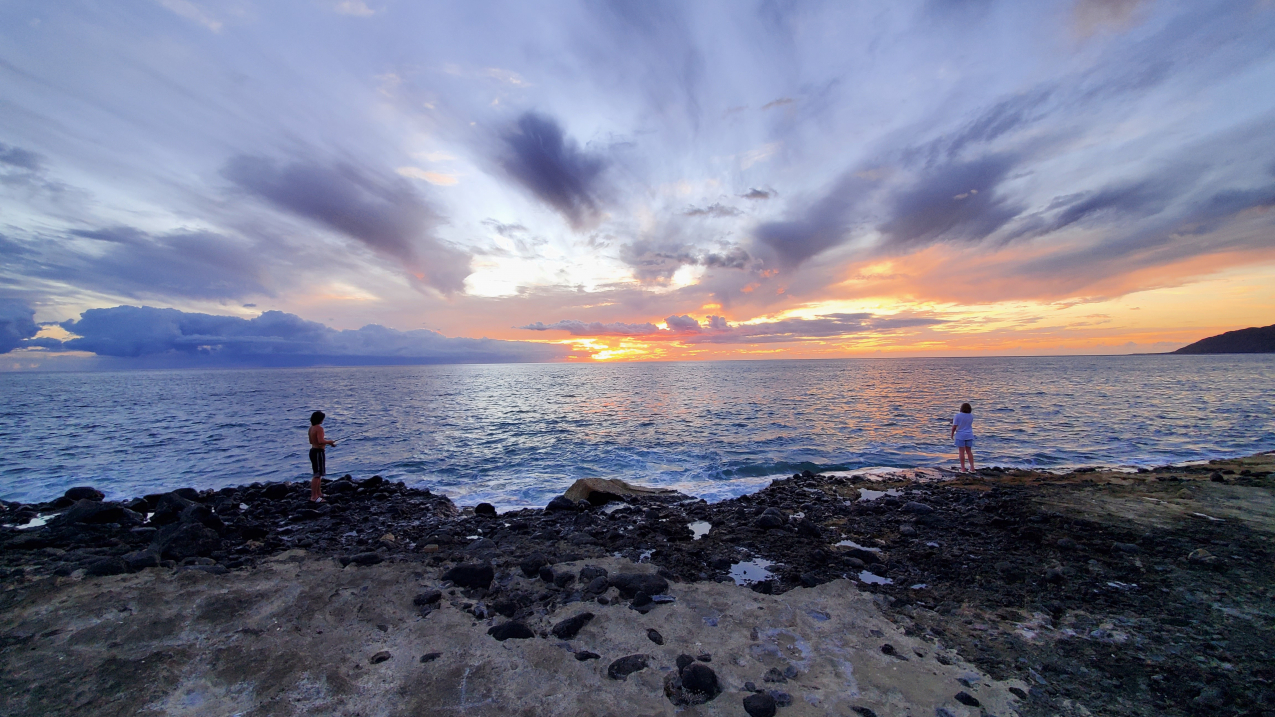
Two students stand on the shore of an island and cast fishing lines into the water. There’s a beautiful orange and blue sunset over the ocean. (Image credit: Caleb Rodriguez)
In these projects, students gain practical lessons in STEM (science, technology, engineering, and math) while responding to challenges in the natural environment. From the Chesapeake Bay to the Hawaiian Islands, take a look at what these grantees are doing to make a difference in environmental education.
Chicago students support environmental justice, recovery in their own ‘backyard’
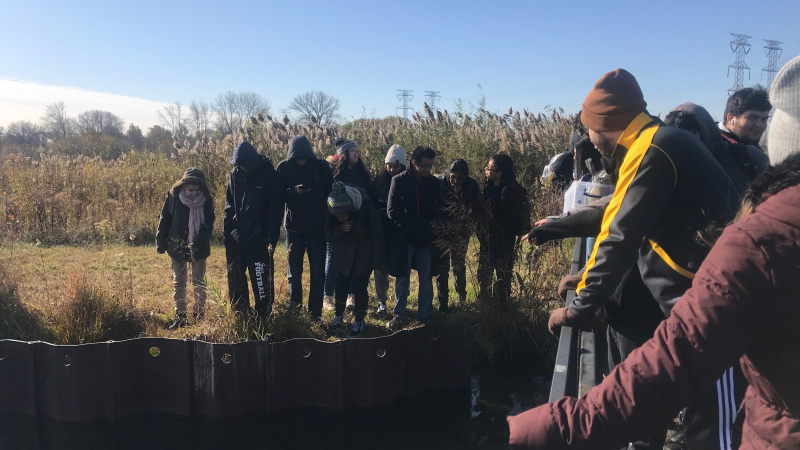
The region along the Calumet River in Illinois and Indiana may be industrialized, but that doesn’t mean it can’t provide enriching outdoor STEM experiences for local students. The Calumet Is My Back Yard (CIMBY) program from the Board of Education of the City of Chicago reached over 1,000 high school students from the south side of Chicago during the 2019-2020 school year. With support from the Great Lakes B-WET program, students participated in activities to protect and restore local native ecosystems and explored real-life applications of their classroom science lessons. Additionally, CIMBY provided professional development for 36 teachers to incorporate environmental education lessons into their classrooms. CIMBY works with students in generally underserved communities in Chicago and northwest Indiana, with students from low-income families making up 86% of the student population at CIMBY’s participating Chicago public high schools.
Throughout the duration of their Great Lakes B-WET grant, CIMBY developed five new service-learning extensions focused on wildlife biodiversity, plant biodiversity, oak ecosystems, water quality testing, and the carbon cycle to complement the year-long Chicago Public School’s biology course. Students completed a range of stewardship activities, such as removing invasive species, testing water quality, and analyzing plant diversity. In a new “Environmental Justice Stories” event hosted by CIMBY, students gained an understanding of how environmental injustice issues transcend local and national scales and learned how community activists confront them. This project will be continuing during the 2021-2022 school year, where it will be expanding to reach a new audience in Burnham Park.
‘Classroom without walls’ fosters traditional, sustainable environmental practices in Hawaii

In Hawaiian, the phrase “Ka Papa Kai” has two meanings: it can translate into both “the seaside class” and “the reef of the sea.” The Ka Papa Kai offsite link project from Malama Pupukea-Waimea invokes the kaona (hidden meaning) of the phrase: learning about the sea while being at the sea. From November 2019 to October 2020, with funding from Hawaii B-WET, Malama Pupukea-Waimea taught marine science through hands-on lessons and activities to 268 students in fourth through 12th grade on Oahu's North Shore at Sharks Cove. Middle and high school students participated in the second year of the Pono Fishing curricula and service learning focused on sustainable traditional Hawaiian fishing practices. The project goal was to steward NOAA resources, increase community-based support for marine management, and develop environmentally minded citizens from a young age who will be inspired to use their education and meaningful watershed educational experiences to care for marine resources. One parent shared, “After just receiving the material, [my children] were intrigued, and as class started, they were happy to be a part of it … There are going to be two more respectful anglers out there.”
Oakland students take the lead to reduce waste in their school
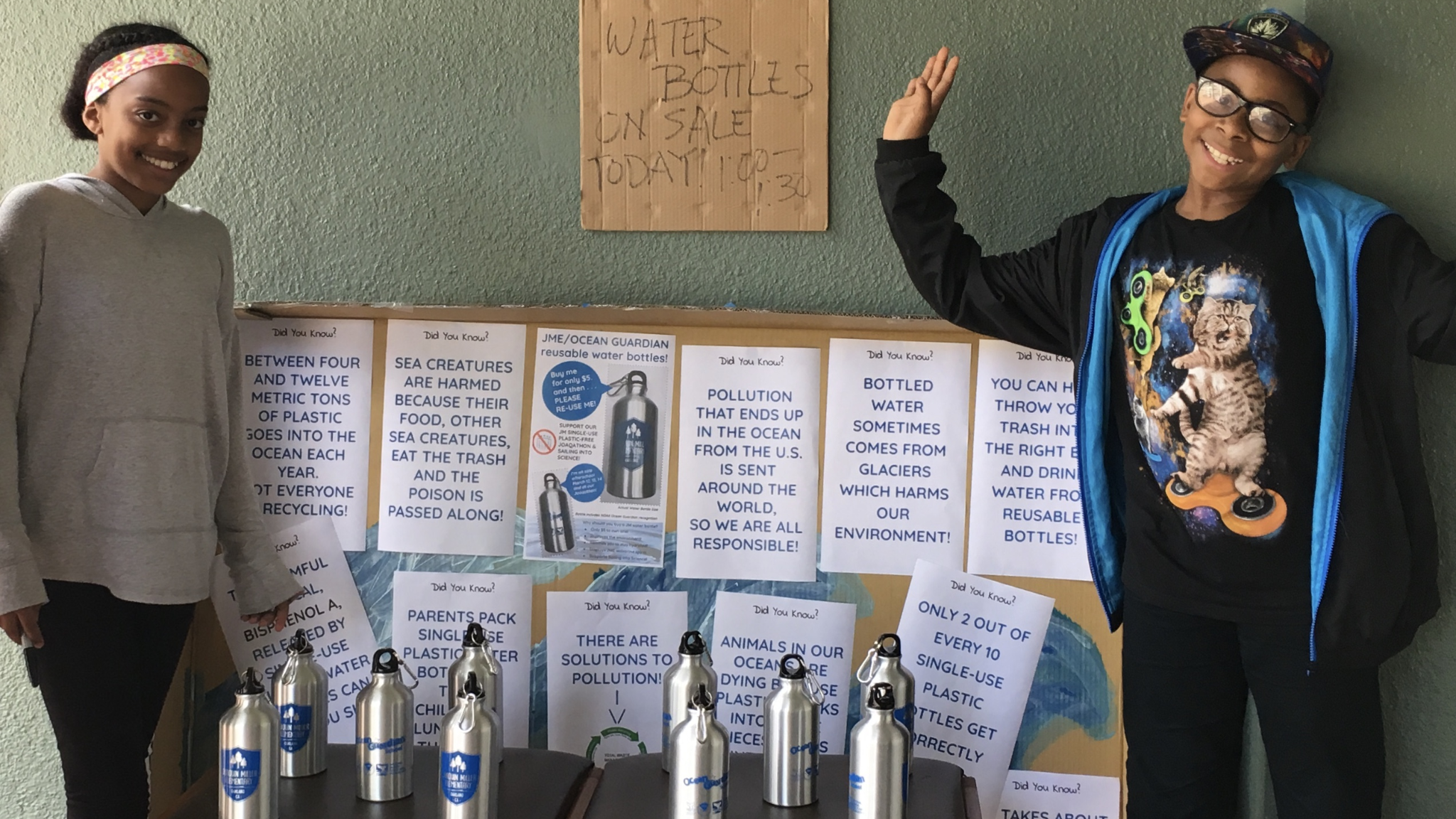
Since 2009, over 900 students at Joaquin Miller (JM) Elementary, an Ocean Guardian School in Oakland, California, have been engaged in a variety of hands-on watershed and ocean stewardship activities. During the 2019-2020 school year, students continued to reduce waste on their campus and educate their community about how actions on land affect the health of our blue planet. With support from the student Green Team, Trash Patrol, and Food Waste Monitors, tangible changes continue to take place at JM. For example, students replaced single-use plastic water bottles with reusable bottles at the school’s hydration station, 18 classrooms received reusable party kits, and 1,171 kilograms of food waste were diverted from the landfill.
Ocean Guardian schools are helping kids understand important environmental issues and take the lead on environmental solutions. In October 2020 at an Oakland Unified School Board Meeting, a third grade JM Green Team member shared, "The Earth is my home, and climate change is destroying it. We throw plastic out into the world. Think about all that trash that ends up in a landfill." JM’s Ocean Guardian lead teacher confirmed, “The Ocean Guardian project allows students of all grade levels to work together … In addition, they are making connections between environmental stewardship at their school, home, and in the community. This is the most important impact if lasting behavioral change is going to happen.”
Blandy Experimental Farm brings field investigations to students learning at home
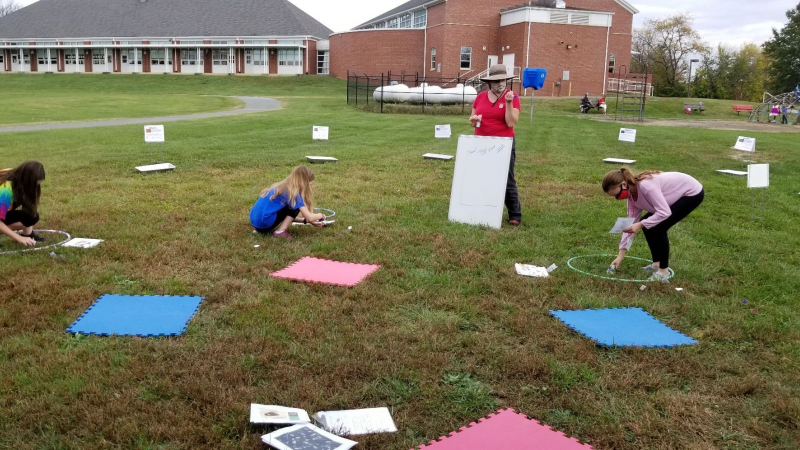
The education team at Blandy Experimental Farm, part of the University of Virginia, has developed a robust partnership with Clarke County Public Schools, enabling the development and implementation of scaffolded environmental literacy curricula across elementary, middle, and high school. This year, fourth graders had the opportunity to raise and monitor brook trout in aquariums at each elementary school as they learned about the life history and human impacts on the habitat that the fish rely on.
Despite the challenges of going virtual during the 2020-21 school year, the program quickly adapted. As project director Candace Lutzow-Felling said, “If students can’t go on field investigations, bring field investigations to the students!” In place of students going out to a stream site together, Blandy staff created virtual field experiences using videos and a 360° virtual watershed tour. Students picked up their own simple kits and engaged in the process of testing water quality parameters from their own home. Based on their investigations, students designed actions to improve and protect brook trout habitat. “As students progress from elementary to middle to high school, they gain expertise in recognizing and analyzing local and regional environmental issues and develop competency to engage in community discussions, decisions, and actions about environmental management and policies relevant to their life experiences,” said Lutzow-Felling.
For more information
The NOAA Bay Watershed Education and Training (B-WET) program brings thousands of K-12 teachers and students around the country outside for hands-on environmental education opportunities every year. The core component of B-WET-funded projects is the Meaningful Watershed Educational Experience (MWEE), learner-centered experiences that focus on investigations into local environmental issues that lead to informed stewardship actions.
The NOAA Ocean Guardian School program is a grant program that supports hands-on ocean stewardship projects in K-12 public, private, and charter schools. Ocean Guardian schools are awarded annually to fund school- or community-based conservation projects. Ocean Guardian activities align with the B-WET MWEE framework by supporting student stewardship action projects. The program is managed by the NOAA Office of National Marine Sanctuaries in coordination with the National Marine Sanctuary Foundation, with support from the B-WET program.



